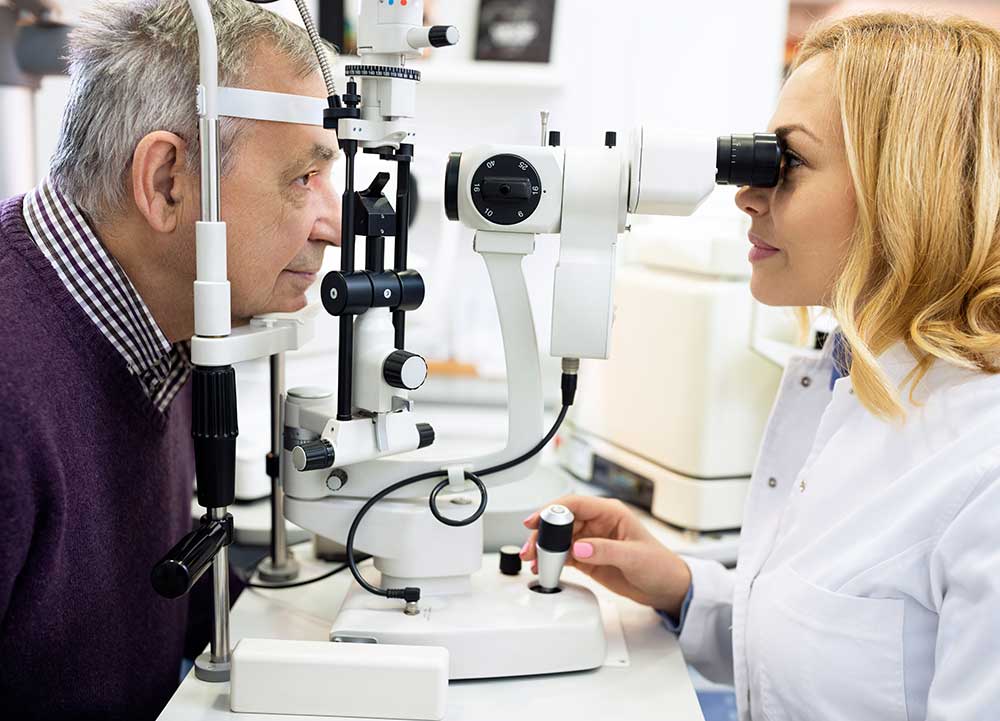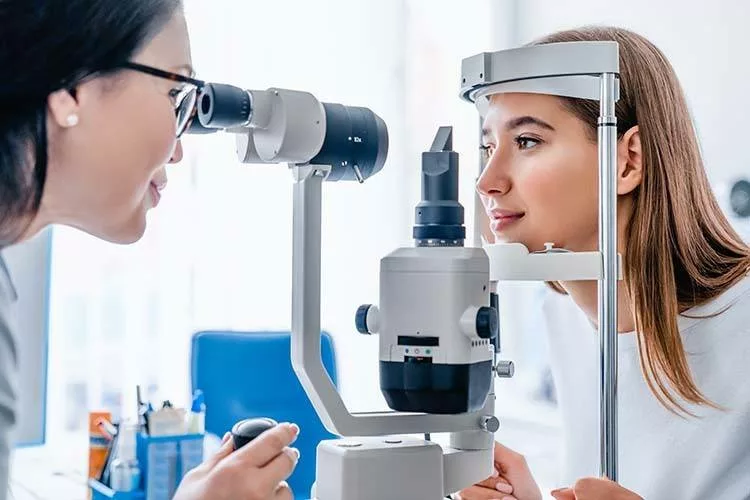Recognizing the Duty of Your Eye Doctor in Preserving Vision
Recognizing the Duty of Your Eye Doctor in Preserving Vision
Blog Article
Exploring the current Technical Developments in Optometry and What They Mean for Optometrists
From the precision of Optical Comprehensibility Tomography to the nuanced insights provided by AI-driven diagnostic tools, these developments are establishing new criteria in client evaluation and therapy. As these innovations permeate the technique, eye doctors are encountered with the difficulty of welcoming these devices to improve individual results.
Innovations in Diagnostic Equipment
Advancing the field of optometry, technologies in diagnostic tools have transformed the means eye treatment specialists analyze and detect eye conditions and aesthetic impairments. The previous decade has actually observed significant technological improvements, enabling even more thorough and precise assessments. Optical Coherence Tomography (OCT), for instance, gives high-resolution cross-sectional pictures of the retina, permitting the very early detection of conditions such as glaucoma and age-related macular deterioration. This non-invasive imaging method has come to be vital in contemporary optometric method.
An additional trick innovation is the intro of advanced corneal topography systems, which map the surface area curvature of the cornea with precision. These devices are especially advantageous for suitable call lenses and identifying corneal disorders. Moreover, digital retinal imaging has actually changed traditional ophthalmoscopy, supplying comprehensive, breathtaking views of the retina that help with detailed visual evaluations.
The development of wavefront aberrometry has actually additionally been crucial, allowing the analysis of refractive errors with unrivaled accuracy (Optometrist Chino). This technology helps in personalizing corrective lenses and enhancing medical outcomes for refractive surgical procedures. Jointly, these analysis innovations encourage eye doctors to supply premium client care, guaranteeing very early intervention and customized treatment techniques, inevitably boosting visual health results
AI in Individual Management
Building on the structure of sophisticated diagnostic devices, the unification of fabricated intelligence (AI) in person management stands for a transformative jump for optometry. AI systems are increasingly employed to improve effectiveness, precision, and personalization in person treatment.
Furthermore, AI-driven systems promote streamlined individual communications and administrative procedures. Automated scheduling, digital appointments, and personalized follow-up plans not only boost client satisfaction yet additionally maximize time management for specialists. These systems can triage clients based on the necessity of their conditions, ensuring that those in vital demand obtain timely interest.
Additionally, AI improves decision-making by providing eye doctors with evidence-based suggestions and treatment paths. By integrating information from electronic health records, AI devices use insights that notify clinical decisions, decreasing the threat of errors and boosting person end results. As AI continues to progress, its function in client management will likely expand, improving the landscape of optometric treatment.
Advances in Retinal Imaging
In the world of optometry, retinal imaging has actually seen remarkable technological innovations that are improving analysis capabilities and individual care. Developments such as Optical Coherence Tomography (OCT) and fundus digital photography have revolutionized just how eye doctors assess the retina and picture.
Boosted imaging techniques like OCT angiography are further refining diagnostic precision. Optometrist Chino. Such improvements promote the identification of min retinal changes that could symbolize illness progression.
In addition, developments in fabricated knowledge are enhancing retinal imaging by making it possible for automatic analysis of huge datasets. These systems help eye doctors in determining patterns a measure of pathology, therefore improving analysis accuracy and performance. Collectively, these advancements are changing retinal imaging right into a cornerstone of modern-day eye treatment, improving results and expanding therapeutic possibilities.
Teleoptometry's Growing Function
Teleoptometry is progressively coming to be a vital element of eye treatment, driven by developments in data and diagnostic devices. As optometry accepts electronic transformation, teleoptometry facilitates remote assessments, allowing eye doctors to prolong their solutions past traditional limits. This is especially advantageous in rural and underserved locations where accessibility to specialized eye care is typically limited. By leveraging high-resolution video conferencing and advanced retinal imaging, eye doctors can carry out have a peek at this website detailed eye tests from afar, making certain prompt medical diagnosis and treatment.
The assimilation of artificial knowledge (AI) more enhances teleoptometry, enabling the evaluation of aesthetic information and aiding in the discovery of ocular problems such as glaucoma and diabetic person retinopathy. AI-powered algorithms can quickly translate complicated imaging information, supplying eye doctors with important understandings that boost clinical decision-making.
Moreover, teleoptometry sustains connection of treatment via smooth combination with electronic health documents (EHRs), allowing optometrists to keep extensive client backgrounds. This guarantees that individuals get consistent and individualized treatment also when talking to different experts.
In spite of these advantages, obstacles continue to be, consisting of ensuring information safety and taking care of client assumptions. Teleoptometry stands for a significant stride towards even more available, efficient, and patient-centered eye care. As innovation develops, its role is poised to broaden better.

Future Patterns in Eye Treatment
A myriad of ingenious patterns is readied to reshape the future of eye care, driven by technical advancements and the progressing demands of people. One substantial pattern is the combination of click this synthetic intelligence (AI) in diagnostics, which promises to improve the accuracy and performance of eye exams. AI formulas can examine huge quantities of data from retinal photos, potentially detecting problems like diabetic person retinopathy and glaucoma earlier than conventional techniques.
Furthermore, personalized medicine is obtaining grip in optometry, with hereditary screening notifying tailored treatment strategies. This strategy intends to maximize client results by customizing interventions to specific genetic accounts. Wearable innovation, such as clever call lenses, is additionally coming up, supplying real-time surveillance of intraocular stress or sugar degrees, thus providing continual understandings right into eye and systemic health and wellness.
The fostering of increased truth (AR) and digital reality (VIRTUAL REALITY) in training and client education is an additional arising fad. These innovations provide immersive experiences that can improve understanding and abilities both for optometrists and individuals. As these patterns develop, optometrists must remain abreast of click for info technical advancements to give sophisticated treatment, making certain enhanced client results and fulfillment in the dynamic landscape of eye treatment.
Verdict

Jointly, these analysis innovations equip optometrists to supply remarkable person treatment, making sure very early treatment and customized treatment techniques, eventually boosting visual health and wellness end results.

As these modern technologies continue to evolve, optometrists must adapt and include them into method, inevitably maximizing operations effectiveness and boosting the standard of eye care provided to individuals.
Report this page